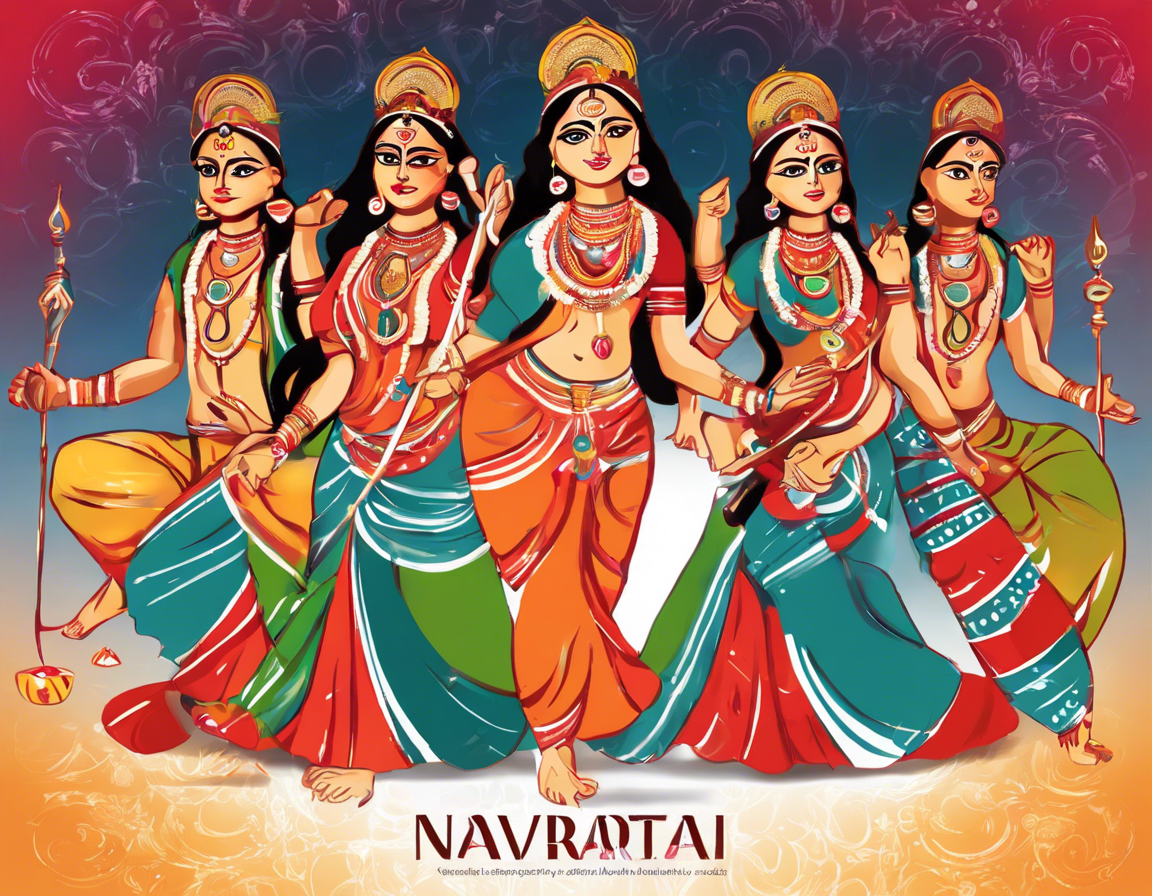The festival of Navratri is one of the most widely celebrated Hindu festivals in India. It is a nine-night festival dedicated to the worship of Goddess Durga, also known as Shakti or Devi. While Navratri is typically celebrated twice a year (Chaitra Navratri and Sharad Navratri), there is a lesser-known Navratri called Gupt Navratri that holds special significance for devotees.
Understanding Gupt Navratri
Gupt Navratri, also known as Magha Gupt Navratri, falls during the Magha month of the Hindu calendar, which usually corresponds to the months of January or February in the Gregorian calendar. This nine-day festival is observed with great devotion and enthusiasm by devotees seeking spiritual upliftment and blessings from the Divine Mother.
Origins and Significance of Gupt Navratri
Gupt Navratri holds special significance as it is believed to be an auspicious time for devotees to worship Goddess Durga and seek her blessings for protection, prosperity, and spiritual growth. The word “Gupt” means hidden or secret, and it is said that during these nine days, the Goddess showers her devotees with secret blessings that are not easily attainable during other times of the year.
Rituals and Celebrations During Gupt Navratri
Devotees observe fasts, offer prayers, and perform special rituals during Gupt Navratri to seek the blessings of Goddess Durga. Mantras, chants, and offerings are made to invoke the divine energy of the Goddess. Kanya Puja, the ritual of worshipping young girls as manifestations of the Goddess, is also a significant part of the celebrations during Gupt Navratri.
The Nine Forms of Goddess Durga
During Gupt Navratri, each day is dedicated to one of the nine forms of Goddess Durga, known as the Navadurga. These forms represent different aspects of the Divine Mother and are worshipped with devotion and reverence by the devotees. The nine forms of Goddess Durga are:
- Shailaputri
- Brahmacharini
- Chandraghanta
- Kushmanda
- Skandamata
- Katyayani
- Kaalratri
- Mahagauri
- Siddhidatri
Each form of Goddess Durga is associated with unique qualities and attributes, and worshipping them during Gupt Navratri is believed to bestow devotees with strength, wisdom, and blessings.
Significance of Fasting During Gupt Navratri
Fasting is an integral part of the observance of Gupt Navratri. Devotees abstain from consuming grains, non-vegetarian food, and alcohol during the nine days of the festival. Fasting is believed to purify the body and mind and help devotees focus on their prayers and spiritual practices. It is also seen as a way to detoxify the body and promote self-discipline.
The Spiritual Benefits of Observing Gupt Navratri
Gupt Navratri is a time for devotees to deepen their spiritual practice and connect with the Divine Mother on a deeper level. The nine days of the festival are seen as an opportunity for inner transformation and growth, as devotees seek the blessings of Goddess Durga for protection, prosperity, and spiritual advancement.
FAQs About Gupt Navratri
1. What is the significance of Gupt Navratri?
Gupt Navratri is a nine-day festival dedicated to the worship of Goddess Durga during the Magha month of the Hindu calendar. It is believed to be a time when devotees can receive secret blessings from the Goddess for protection, prosperity, and spiritual growth.
2. When is Gupt Navratri celebrated?
Gupt Navratri falls during the Magha month of the Hindu calendar, which typically corresponds to January or February in the Gregorian calendar.
3. What are the rituals observed during Gupt Navratri?
Devotees observe fasts, offer prayers, and perform special rituals to seek the blessings of Goddess Durga during Gupt Navratri. Kanya Puja is also a significant part of the celebrations.
4. Why is fasting important during Gupt Navratri?
Fasting is believed to purify the body and mind, help devotees focus on their prayers, and promote self-discipline during Gupt Navratri.
5. What are the nine forms of Goddess Durga worshipped during Gupt Navratri?
The Navadurga, which are the nine forms of Goddess Durga, are worshipped during Gupt Navratri. Each form represents different aspects of the Divine Mother and bestows devotees with strength, wisdom, and blessings.
6. Is Gupt Navratri as widely celebrated as Chaitra and Sharad Navratri?
Gupt Navratri is not as widely celebrated as Chaitra and Sharad Navratri, but it holds special significance for devotees seeking secret blessings from the Goddess.
7. How can one make the most of Gupt Navratri spiritually?
Devotees can make the most of Gupt Navratri by deepening their spiritual practice, connecting with the Divine Mother, and seeking inner transformation and growth through prayers, mantras, and rituals.
Conclusion
Gupt Navratri is a sacred and auspicious time for devotees to seek the blessings of Goddess Durga and deepen their spiritual connection with the Divine Mother. By observing fasts, performing rituals, and worshipping the Navadurga with devotion, devotees can experience protection, prosperity, and spiritual growth during this nine-day festival. May the blessings of Goddess Durga bring peace, joy, and fulfillment to all who celebrate Gupt Navratri.

